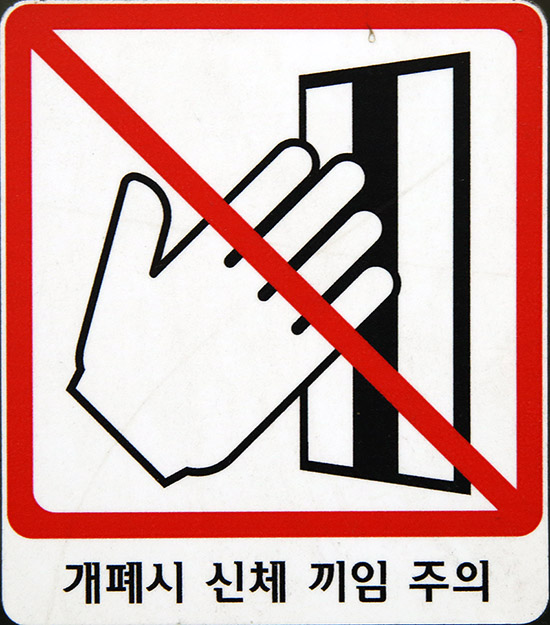Safety screen doors act of a barrier between moving subway trains and passengers standing at the platform. These doors only open when a train is at the station and fully stopped. Most stations have safety screen doors installed and more are being installed in more rural areas. Within the next few years, these should be available at all stations nationwide. Rolling stock is highly standardized within a subway line. This means that the length of a car, the number of doors, and the space between doors are uniform but may be different with another line. Due to this uniformity within a line, the doors of the train and the safety doors on the platform line up cleanly.
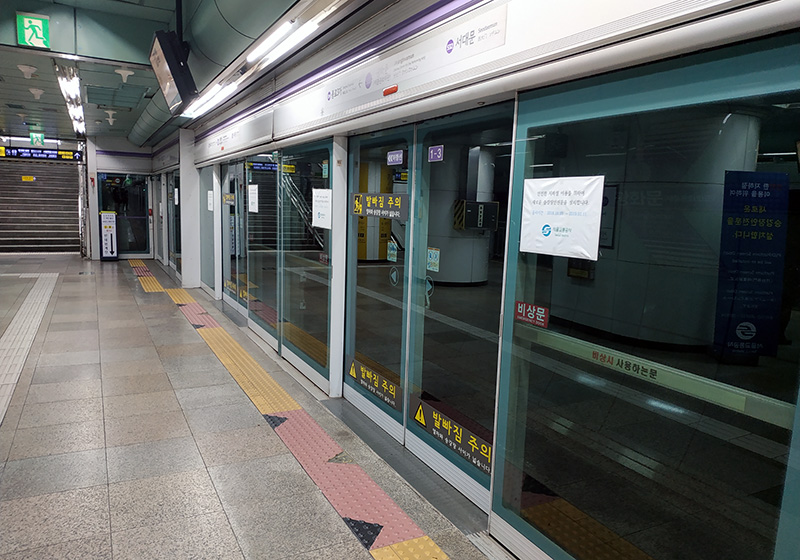
Each set of doors will be labeled both on the glass doors and also on the ground. Here were see 3-3 which means the third car and third set of doors. If you want to save time, you might want to try and remember which exit lines you up for transfers or exits are certain stations. Some subway maps mention these numbers as a way to help people to save time, but this is not consistently provided. Also keep in mind that a lot of people try to use the most advantageous vehicle exits, so these are quite busy in rush hour traffic.
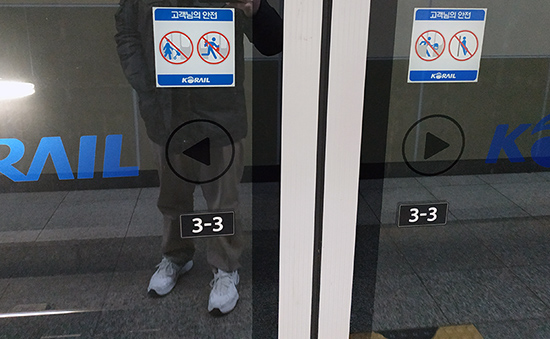
Looking at the floor we see some bumpy material, which is installed for people with vision difficulties. We also see three black triangles. The middle says the 3-3 that we saw on the glass safety doors. The triangle is pointing towards us which is to indicate this is where the doors will open and exiting passengers will start streaming through. In order for people to more easily leave, passengers who wish to enter the train are instructed to wait behind one of the two other triangles. As these are pointing toward the subway car, much like an arrow these indicate the direction people will be going.
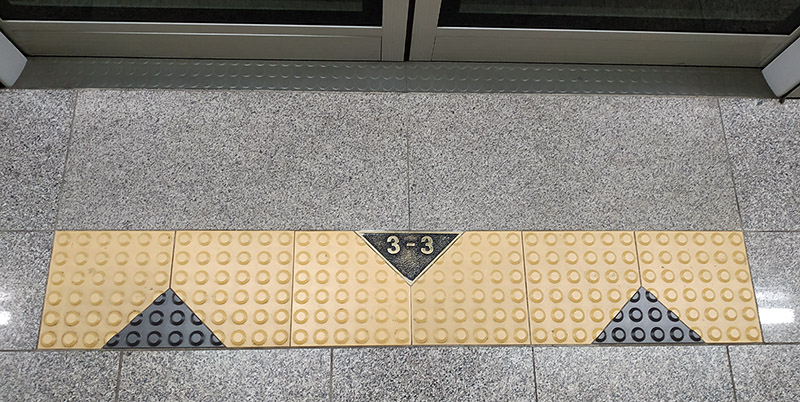
This subway station in Daejeon helps push the point even farther by adding footprints to tell people where they should wait.

Thanks to the 2002 FIFA World Cup jointly held in Korea and Japan (Wikipeda), this system came into widespread usage and the related culture of waiting for exiting passengers to fully exit the vehicle before the entrance of new passengers all came into play. As stadiums were located in larger cities, most of these had subway systems and they were directly affected by this change in infrastructure and culture.
Depending on the expected ridership, some lines have trains with only two cars, others with four, others with six. Line 9 in Seoul is a little odd as their platforms are significantly longer than the trains that visit as they expect to have longer trains in service in the future. For this line, and some others, there will be a sticker on some of the safety screen doors telling you it will not open and you should wait by a different set of doors.
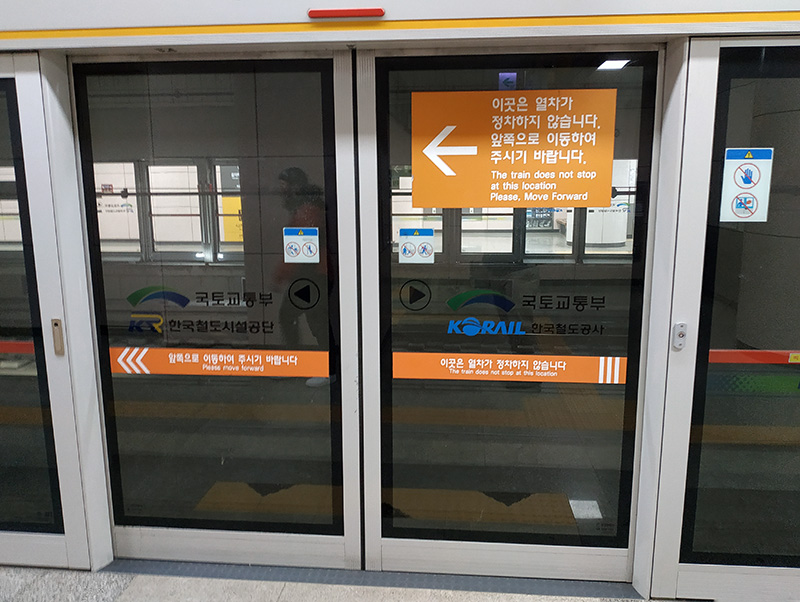
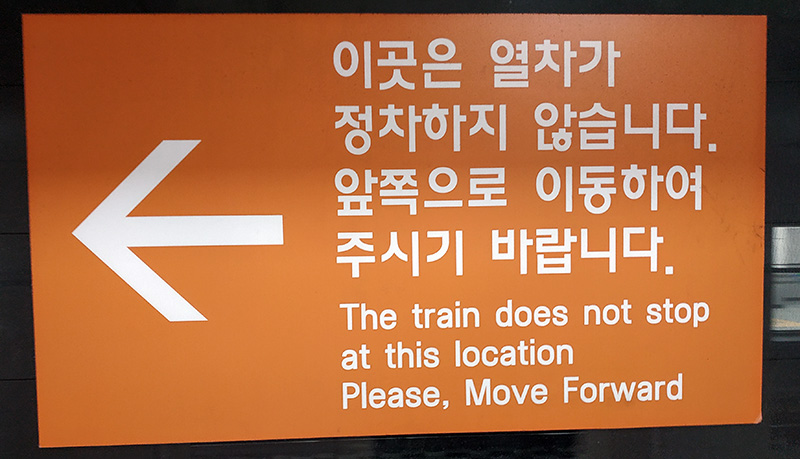
The reason there are platform entrances, but no subway car doors to reach them, is the idea that in the future certain lines will need to run longer trains in order to accommodate the number of passengers who wish to use that train. This has happened for Line 9 in Seoul; the line opened with four-car train sets. Later some train sets were four-cars and others were six-cars, before all train sets were to six-cars per in late 2019.
The stickers shown above and this sign below are all from the Bundang line in a station far from central Seoul.

Similar stickers exist telling waiting passengers that this exit is a very popular pathway so they recommend you wait by a different set of doors to make sure you can enter the train before the doors close.
If you are curious to see what they look like when getting installed, here is an image of the construction in Gwanghwamun Station in Seoul. The subway operates as normal but you’ll need to a be a little more careful not to trip on anything and there is a staff member in an orange safety jacket viewable to the left.
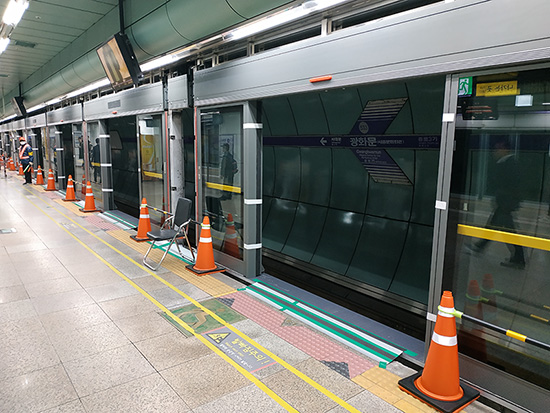
People are always in a hurry and would prefer to save time wherever possible. This has led to enough people trying to enter through safety screen doors when they are in the process of closing, that they have posted signs telling people not to force their way in but instead wait for the next train to come. Keep in mind that they are two sets of doors which are closing at roughly the same time; the safety screen doors and the subway car doors. While they try to close simultaneously, their timing is slightly off, which means a person might make it through the first sets of doors while they are closing, but they might not be able to make it through the second set of doors as they are closed more than the first set.
Here are two types of stickers which tell people to simply wait for the next train to come instead of jumping through closing doors.
